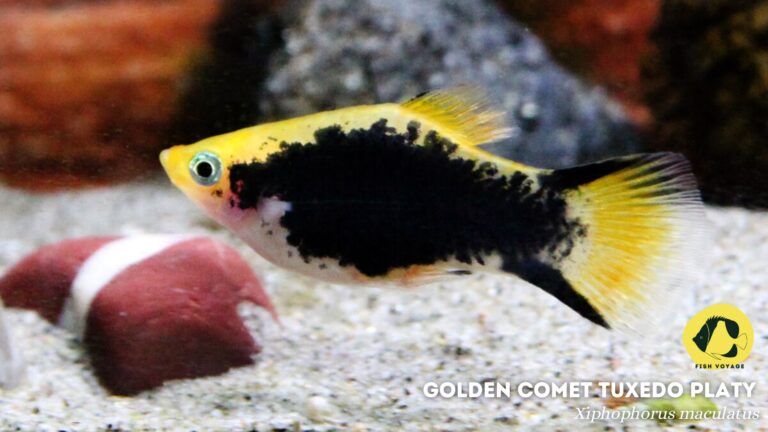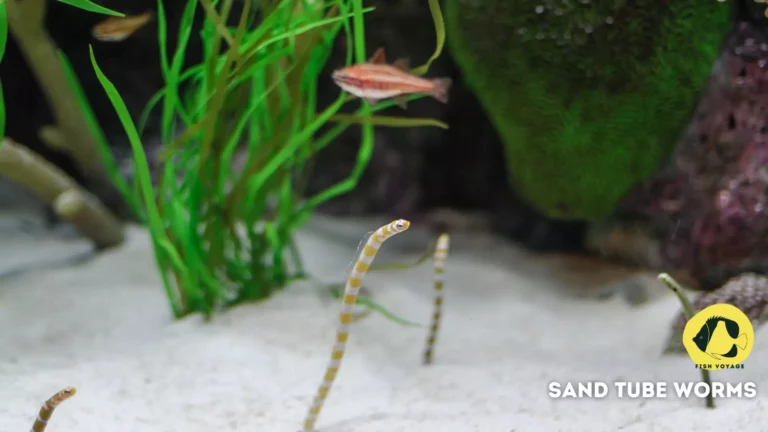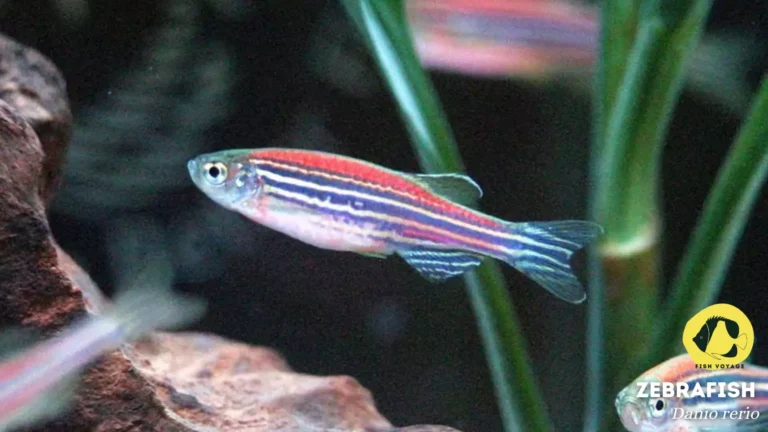Are Green Spotted Puffer Fish Freshwater?

In the realm of aquarium enthusiasts, the Green Spotted Puffer Fish, recognized for its captivating appearance and engaging personality, has become a sought-after species for those venturing into the world of aquatic companionship. With its distinctive greenish hues and endearing spots, this species raises a fundamental question among prospective keepers: “Are Green Spotted Puffer Fish considered freshwater?” In this exploration, we delve into the intricacies of their habitat, shedding light on whether these charming aquatic creatures thrive in freshwater environments or if their true aquatic bliss lies in brackish waters. Join us on this journey as we unravel the mysteries surrounding the Green Spotted Puffer Fish and discern the optimal conditions for their well-being.
Characteristics of Green Spotted Puffer Fish
- Vibrant Appearance: The Green Spotted Puffer Fish boasts a captivating visual allure, characterized by its vibrant green coloration, complemented by endearing spots that contribute to its distinctive charm.
- Compact Size with Personality: Despite their relatively small size, these puffers are known for their big personalities. Their playful demeanor and inquisitive nature make them stand out among aquarium enthusiasts, creating a unique and engaging aquatic presence.
- Beak-Like Mouth: A prominent feature of the Green Spotted Puffer Fish is its beak-like mouth, a characteristic that sets it apart from other freshwater fish. This specialized mouth structure is adapted for crushing the hard shells of crustaceans and snails, forming an integral part of their feeding behavior.
- Adaptable Eyesight: Equipped with eyes that can move independently, these puffers exhibit keen observational skills, enhancing their ability to navigate and interact with their surroundings. This distinctive eye movement adds an extra layer of fascination to their already captivating demeanor.
- Brackish Water Affinity: One of the defining features that distinguishes the Green Spotted Puffer Fish is its affinity for brackish water. While adaptable to various conditions, their optimal health and vibrancy often come to the forefront in environments that combine elements of both freshwater and saltwater.

As we delve into the physical attributes of the Green Spotted Puffer Fish, these distinctive characteristics contribute to the allure that makes them a standout choice for aquarium enthusiasts seeking a captivating and interactive aquatic companion.
Natural Habitat
- Freshwater and Brackish Mangroves: In their native habitats, Green Spotted Puffer Fish are often found navigating the intricate root systems of mangrove forests. These environments encompass a delicate balance between freshwater and brackish water, providing the puffers with an array of microhabitats rich in prey.
- Estuarine Zones: Thriving in estuarine zones, these puffers display an inherent adaptability to fluctuating salinity levels. Estuaries, where freshwater rivers meet the salty embrace of the ocean, mirror the brackish conditions that Green Spotted Puffer Fish are naturally inclined towards.
- Tidal Areas and Coastal Waters: Along coastal regions with tidal influences, Green Spotted Puffers explore the dynamic intersections of freshwater and saltwater. These areas offer a mosaic of habitats, from shallow pools to deeper waters, enabling the puffers to explore diverse ecological niches.
- Shallow Marshes and Ponds: The Green Spotted Puffer Fish is also known to inhabit shallow marshes and ponds in their native range. These environments, often influenced by seasonal changes, further underline their ability to acclimate to various water conditions within the freshwater to brackish spectrum.
- Vegetation-Rich Environments: Found amidst vegetation-rich expanses, including submerged plants and floating vegetation, Green Spotted Puffer Fish navigate through these habitats with agility. The presence of vegetation provides them with shelter and adds to the biodiversity of their surroundings.
As we unravel the natural habitat of Green Spotted Puffer Fish, it becomes evident that their native ecosystems seamlessly blend freshwater and brackish elements. Understanding these intricacies is pivotal for recreating a suitable environment in captivity, ensuring the well-being and vibrancy of these captivating aquatic companions.
Freshwater or Brackish Water?
Understanding Freshwater vs. Brackish Water
- Freshwater Defined: Freshwater has a low salinity level, typically less than 0.5 parts per thousand (ppt). It is the type of water found in rivers, lakes, and ponds, devoid of significant salt content.
- Brackish Water Defined: Brackish water falls in the intermediate range between freshwater and saltwater, with a salinity level higher than freshwater but lower than seawater. It typically ranges from 0.5 to 30 ppt.
Green Spotted Puffer Fish and Salinity Preferences
- Natural Affinity for Brackish Conditions: Green Spotted Puffer Fish, unlike many traditional freshwater species, exhibit a natural affinity for brackish conditions. Their native habitats, such as mangroves and estuaries, highlight their adaptability to salinity variations.
Optimal Thriving Conditions
- Balancing Act: While Green Spotted Puffer Fish can adapt to varying salinity levels, they often thrive best in environments that mimic the brackish conditions of their natural habitats. A balance between freshwater and saltwater elements is key to supporting their health and well-being.
Challenges in Pure Freshwater
- Health Implications: Keeping Green Spotted Puffer Fish in purely freshwater setups may pose challenges to their long-term health. The absence of brackish conditions might impact their immune system and overall vitality.
Captive Care Considerations
- Salinity Gradual Transition: For aquarium enthusiasts, transitioning Green Spotted Puffers into captivity requires a gradual acclimation to brackish conditions. This approach mirrors their natural adaptation process and promotes a smoother adjustment to aquarium life.
In the exploration of whether Green Spotted Puffer Fish are considered freshwater or brackish water inhabitants, it becomes evident that their preference leans towards the latter. Achieving the delicate balance of brackish conditions in captivity is essential for unlocking the full vibrancy and well-being of these captivating aquatic companions.
Adaptability in Captivity
Versatility in Tank Conditions
- Wide Tolerance Range: Green Spotted Puffer Fish showcase a remarkable adaptability to various tank conditions, encompassing a spectrum of salinity levels. This adaptability makes them suitable for diverse aquarium setups.
Behavioral Dynamics
- Playful and Inquisitive: In captivity, these puffers exhibit playful and inquisitive behaviors, exploring their surroundings with curiosity. Their dynamic interactions with tank decor and tankmates add a layer of entertainment for aquarium enthusiasts.
Feeding Preferences
- Varied Diet Requirements: Green Spotted Puffers are carnivores with a penchant for live and frozen foods. Ensuring a diverse diet that includes snails, crustaceans, and meaty offerings is crucial for meeting their nutritional needs and promoting overall health.
Health Considerations
- Susceptibility to Disease: While hardy, Green Spotted Puffer Fish can be susceptible to common aquarium diseases. Regular monitoring of water parameters, maintaining cleanliness, and providing a well-balanced diet contribute to their overall health and resilience.
Tank Size and Setup
- Adequate Space Requirements: Green Spotted Puffers thrive in environments that provide ample swimming space. A sufficiently sized tank with appropriate hiding spots and aquatic vegetation enhances their well-being and reduces stress.
Compatibility with Tankmates
- Selecting Suitable Tankmates: While known for their interactive nature, Green Spotted Puffers can display aggression, especially towards conspecifics. Careful consideration when selecting tankmates is crucial to ensure a harmonious community aquarium.
Gradual Salinity Transitions
- Acclimation Process: When transitioning Green Spotted Puffers into captivity, a gradual acclimation to brackish conditions is recommended. This mirrors their natural adaptation process, minimizing stress and supporting a seamless adjustment.
In the realm of captive care, understanding the adaptability of Green Spotted Puffer Fish is paramount. Their dynamic behaviors, dietary preferences, and sensitivity to tank conditions underscore the need for a thoughtful and well-informed approach to ensure their thriving existence in aquarium setups.
Caring for Green Spotted Puffer Fish
Optimal Water Parameters
- Salinity Levels: Maintain a brackish environment with a recommended salinity range of 1.005 to 1.008. Mimicking the conditions of their native habitats is crucial for the well-being of Green Spotted Puffer Fish.
- Temperature: Keep the water temperature within the range of 75°F to 82°F (24°C to 28°C) to ensure their metabolic processes function optimally.
- pH Level: Aim for a pH level between 7.5 and 8.5 to create a suitable environment for these puffers.
Tank Setup
- Size Matters: Provide a spacious tank with a minimum of 30 gallons for a single Green Spotted Puffer. Larger tanks are recommended for multiple puffers to reduce territorial conflicts.
- Substrate and Decor: Utilize a substrate with a mix of sand and smooth gravel to accommodate their natural behaviors. Incorporate hiding spots, caves, and aquatic plants to create a stimulating and secure environment.
Dietary Considerations
- Varied Diet: Offer a diverse diet that includes live or frozen foods such as snails, shrimp, and high-quality pellets. The inclusion of vitamin-enriched foods contributes to their overall health.
Monitoring Health
- Regular Check-ups: Conduct routine water tests to monitor ammonia, nitrate, and nitrite levels. Keep an eye on the puffers for any signs of illness, and promptly address any health concerns.
Tank Mate Compatibility
- Choose Wisely: While Green Spotted Puffers can be kept with other species, selecting compatible tank mates is crucial. Avoid housing them with fin-nipping or aggressive fish. Consider peaceful companions that share similar water parameter requirements.
Individual or Group Keeping
- Social Dynamics: Green Spotted Puffers can be kept individually or in a carefully monitored group. However, be vigilant for signs of aggression, especially during feeding times or territorial disputes.
Feeding Routine
- Regular Feedings: Feed multiple small meals throughout the day to replicate their natural feeding patterns. This helps prevent obesity and promotes their energetic behavior.
Water Changes
- Consistent Maintenance: Regular water changes of about 10-20% every week help maintain water quality. Ensure the new water added matches the existing tank parameters.
Aspiring aquarists venturing into the captivating world of Green Spotted Puffer Fish will find success by adhering to these practical tips. By creating an environment that mirrors their natural habitat and attending to their specific care requirements, enthusiasts can ensure the health and vitality of these engaging aquatic companions.
Common Misconceptions
Misconception 1
- Misconception: Green Spotted Puffers Thrive Solely in Freshwater Environments
- Reality: While they can adapt to freshwater conditions, Green Spotted Puffers exhibit optimal health and vibrancy in brackish environments. The misconception of them being exclusively freshwater fish may lead to inadequate care.
Misconception 2
- Misconception: Small Tanks Are Sufficient for Green Spotted Puffers
- Reality: Green Spotted Puffers are active swimmers that require spacious tanks. Contrary to the belief that they can thrive in small setups, a larger tank, ideally 30 gallons or more, is essential for their well-being.
Misconception 3
- Misconception: Green Spotted Puffers Are Low-Maintenance Fish
- Reality: While hardy, these puffers demand specific care. Regular water testing, diverse diets, and attention to tank parameters are crucial. Neglecting their needs may lead to health issues, dispelling the notion of them being low-maintenance.
Misconception 4
- Misconception: Green Spotted Puffers Are Easy to Keep with Any Tankmates
- Reality: Careful consideration is necessary when selecting tankmates. Green Spotted Puffers can display aggression, particularly towards conspecifics and fin-nipping species. The misconception of their universal compatibility can lead to compatibility issues.
Misconception 5
- Misconception: Green Spotted Puffers Do Not Require Brackish Conditions
- Reality: It’s a common misconception that these puffers can thrive in pure freshwater. In truth, maintaining brackish conditions is vital for their overall health and longevity, aligning with their natural habitat.
Misconception 6
- Misconception: Green Spotted Puffers Have Unlimited Appetites
- Reality: Overfeeding is a prevalent misconception. Green Spotted Puffers, while voracious eaters, are prone to obesity. A well-balanced feeding routine, with appropriately sized portions, prevents health issues related to overconsumption.
Misconception 7
- Misconception: Green Spotted Puffers Can Thrive in Unfiltered Tanks
- Reality: Adequate filtration is essential for water quality. The misconception that these puffers can flourish in unfiltered tanks overlooks the importance of maintaining optimal water conditions to ensure their health.
By dispelling these common misconceptions surrounding Green Spotted Puffer Fish, aquarium enthusiasts can foster a more accurate understanding of their specific care requirements. Clearing these misconceptions paves the way for a fulfilling and sustainable experience in keeping these charming aquatic companions.
Conclusion
In conclusion, the allure of the Green Spotted Puffer Fish lies not only in its vibrant appearance and engaging personality but also in the intricacies of its habitat and care. As we’ve explored, these captivating aquatic companions hail from environments that seamlessly blend freshwater and brackish conditions, shedding light on the misconception of them thriving solely in freshwater setups.
To unlock the full vibrancy and well-being of Green Spotted Puffer Fish in captivity, it’s crucial to replicate their native conditions. Maintaining a brackish environment with a salinity range of 1.005 to 1.008, coupled with careful attention to water parameters, tank size, and compatible tank mates, is paramount.
In the realm of aquarium care, understanding the adaptable nature of Green Spotted Puffer Fish and dispelling common misconceptions is vital. By providing a spacious tank, offering a diverse and balanced diet, and recreating the dynamic elements of their natural habitat, enthusiasts can ensure a rewarding and sustainable experience in keeping these captivating aquatic companions.
As keepers venture into the world of Green Spotted Puffer Fish, armed with accurate information and a nuanced understanding of their needs, they embark on a journey of discovery, witnessing firsthand the playful charm and dynamic presence that these remarkable creatures bring to the aquatic realm.
Additional Resources
Online Forums for Enthusiastic Discussions
Engage in lively discussions and seek advice from experienced aquarists on dedicated forums. Explore communities such as Aquarium Advice and Fishlore for valuable insights and shared experiences in Green Spotted Puffer Fish care.
Books for In-Depth Knowledge
Delve into comprehensive guides that offer in-depth knowledge on Green Spotted Puffer Fish care. Explore titles such as “The Complete Idiot’s Guide to Freshwater Aquariums” by Mike Wickham and “Brackish-Water Fishes” by Neale Monks for a thorough understanding of their habitat, behavior, and optimal care practices.
Social Media Communities for Visual Inspiration
Connect with a broader community of aquarists and share your experiences on social media platforms. Join groups on platforms like Reddit’s Aquarium Community and Instagram’s #PufferFishCommunity for visual inspiration, real-time updates, and a supportive network of fellow Green Spotted Puffer Fish enthusiasts.
By exploring these additional resources, you can augment your knowledge, connect with like-minded individuals, and access a wealth of information to enhance the well-being of your Green Spotted Puffer Fish. These resources serve as valuable companions on your journey into the captivating world of aquatic care.
Frequently Asked Questions (FAQs)
1. Are Green Spotted Puffer Fish Freshwater or Saltwater?
Green Spotted Puffer Fish are adaptable to various water conditions but thrive best in brackish environments—a balanced mix of freshwater and saltwater elements. Understanding their natural habitat helps maintain their optimal health in captivity.
2. Can Green Spotted Puffer Fish Live in Pure Freshwater Tanks?
While they can adapt to freshwater, Green Spotted Puffer Fish exhibit enhanced well-being in brackish conditions. Pure freshwater setups may lead to health issues, emphasizing the importance of replicating their native habitat.
3. What Salinity Level is Suitable for Green Spotted Puffer Fish?
The recommended salinity range for Green Spotted Puffer Fish is 1.005 to 1.008. This mimics the brackish conditions of their native habitats, supporting their physiological processes and overall thriving in captivity.
4. Can Green Spotted Puffers Be Kept with Other Fish?
Careful consideration is necessary when selecting tankmates. Green Spotted Puffers can display aggression, especially towards conspecifics and fin-nipping species. Choosing peaceful companions that share similar water parameter requirements is crucial.
5. What Size Tank is Suitable for Green Spotted Puffer Fish?
Green Spotted Puffers are active swimmers, and a larger tank is essential for their well-being. A minimum tank size of 30 gallons for a single puffer is recommended, providing ample space to explore and reducing territorial conflicts.






